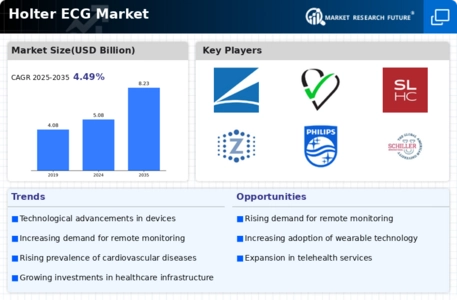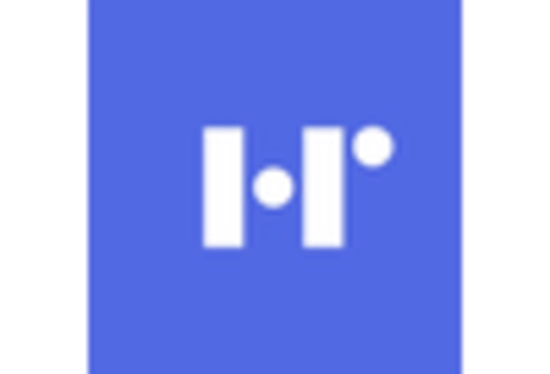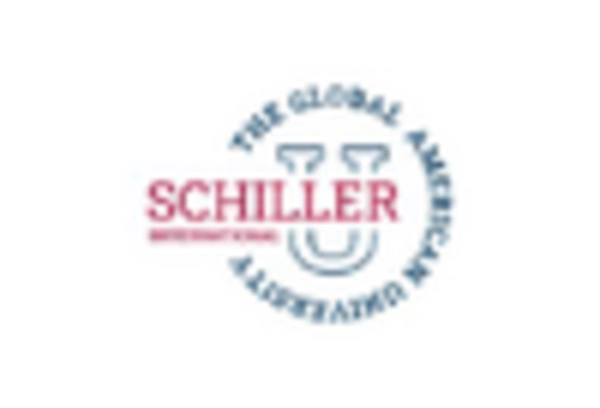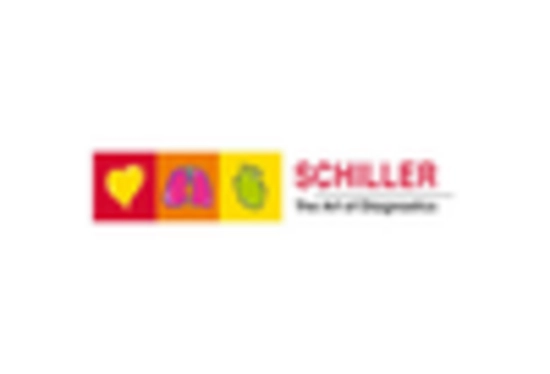Increased Awareness of Cardiac Health
There is a growing awareness of cardiac health among the general population, which is positively impacting the Holter ECG Market. Educational campaigns and health initiatives are informing individuals about the importance of regular heart monitoring, particularly for those at risk of cardiovascular diseases. This heightened awareness is leading to an increase in demand for Holter ECG devices, as more people seek proactive measures to monitor their heart health. Market trends suggest that as awareness continues to rise, the adoption of Holter ECG technology will likely increase, further propelling the growth of the Holter ECG Market.
Rising Incidence of Cardiac Disorders
The increasing prevalence of cardiac disorders is a primary driver for the Holter ECG Market. As cardiovascular diseases continue to rise, the demand for effective monitoring solutions becomes more pronounced. According to recent statistics, cardiovascular diseases account for a significant portion of global mortality rates, prompting healthcare providers to seek advanced diagnostic tools. Holter ECG devices, known for their ability to provide continuous monitoring over extended periods, are becoming essential in managing these conditions. This trend is likely to propel the Holter ECG Market forward, as healthcare systems prioritize early detection and intervention strategies to combat the growing burden of heart-related ailments.
Technological Innovations in ECG Devices
Technological advancements play a crucial role in shaping the Holter ECG Market. Innovations such as miniaturization of devices, enhanced battery life, and improved data analytics capabilities are making Holter ECG devices more user-friendly and efficient. The integration of wireless technology allows for real-time data transmission, which is increasingly appealing to both patients and healthcare providers. Furthermore, the introduction of AI-driven analytics is expected to enhance diagnostic accuracy, thereby increasing the adoption of Holter ECG devices. As these technologies evolve, they are likely to attract a broader customer base, further stimulating growth in the Holter ECG Market.
Growing Demand for Remote Patient Monitoring
The shift towards remote patient monitoring is significantly influencing the Holter ECG Market. With the increasing emphasis on telehealth solutions, healthcare providers are adopting Holter ECG devices to facilitate continuous monitoring of patients outside traditional clinical settings. This trend is driven by the need for efficient management of chronic conditions and the desire to reduce hospital visits. Market data indicates that the remote patient monitoring segment is expected to witness substantial growth, as patients and providers alike recognize the benefits of home-based monitoring solutions. Consequently, this demand is likely to enhance the market landscape for Holter ECG devices.
Regulatory Support for Advanced Diagnostic Tools
Regulatory bodies are increasingly supporting the development and adoption of advanced diagnostic tools, which is beneficial for the Holter ECG Market. Initiatives aimed at streamlining the approval process for innovative medical devices are encouraging manufacturers to invest in research and development. This regulatory environment fosters competition and innovation, leading to the introduction of more sophisticated Holter ECG devices. As these devices gain regulatory approval, they are likely to penetrate the market more rapidly, thus driving growth in the Holter ECG Market. The alignment of regulatory frameworks with technological advancements is expected to create a conducive environment for market expansion.


















Leave a Comment